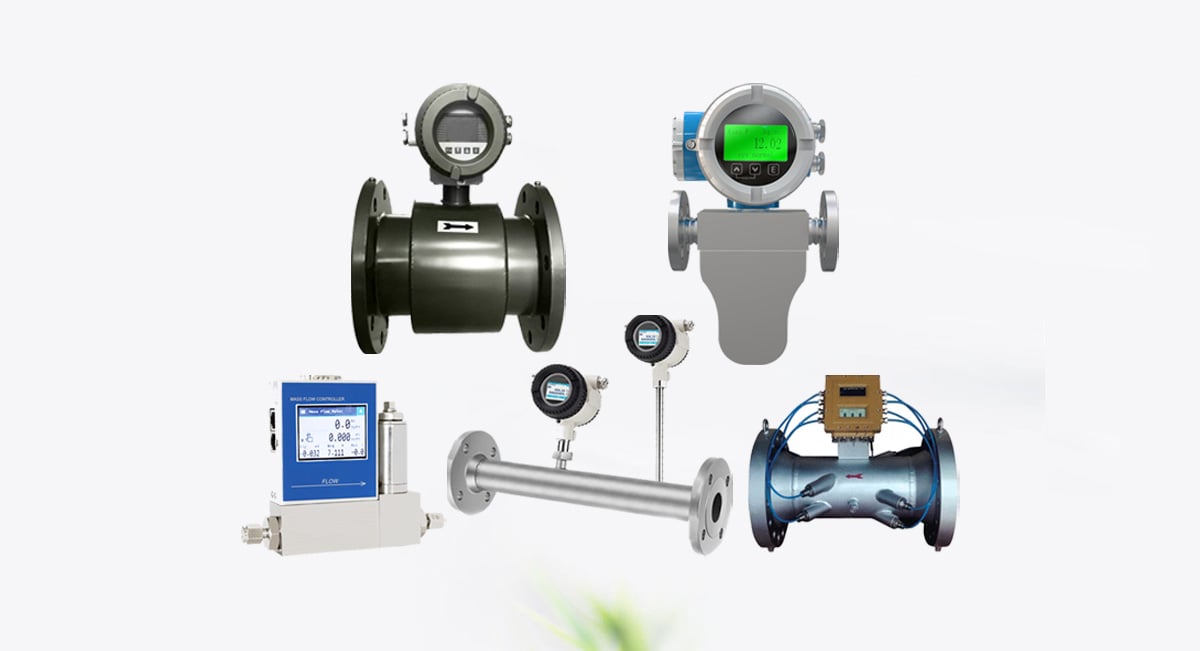Electromagnetic flowmeters are widely used in industrial applications for their accuracy and reliability, but their performance can be affected by factors such as gas bubbles, sediment accumulation, and solid particle deposits. These issues can lead to unstable readings, reduced measurement accuracy, or even instrument failure over time. This article analyzes typical challenges faced by electromagnetic flowmeters, supported by case studies, and provides professional insights and solutions to maintain accurate and reliable operation under demanding conditions.
Table of Contents
Liquids Containing Gases
The presence of dissolved gases in liquids does not affect flow measurement, but free gases (i.e., gas bubbles) can impact measurements and may cause malfunctions. There are three main sources of free gas in a liquid pipeline:
- Air not fully purged from the pipeline.
- Air or gas being drawn in from outside the pipeline system.
- Dissolved gases transforming into free gas bubbles.
In process industries, the pressure and temperature of liquids in pipelines often fluctuate. When the pressure drops or the temperature increases, dissolved gases can transform into free gas bubbles. For instance, when a liquid below room temperature remains stationary in the pipeline for a period (such as during a shutdown), the dissolved air may turn into gas bubbles. Conversely, when a liquid above room temperature is held in a sealed pipeline and gradually cools, it can create local vacuum conditions, leading to the formation of gas bubbles from dissolved air or vaporization.
Such gas bubbles often cause unstable flow at the start-up phase of the process when restarting the system. This can manifest as fluctuating flow output, but the system usually stabilizes after running for a while. Additionally, when the control valve is nearly closed, the liquid may tend to vaporize, leading to bubble formation.
Liquids Containing Solid Phases
Liquids containing solid particles, such as powders, granular materials, or fibers, may cause several issues:
- Slurry noise.
- Electrode surface contamination.
- Conductive or insulating deposition layers on electrodes or linings.
- Wear or deposition on the lining, altering the flow area.
Case Study: Conductive Deposition Short-Circuit Effect
If conductive materials deposit on the insulating lining surface of an electromagnetic flowmeter, the flow measurement signal will be short-circuited, causing instrument failure. Since conductive material gradually accumulates over time, this fault typically does not occur during commissioning but rather after some period of operation.
A diesel engine factory’s tool workshop used a DN80mm electromagnetic flowmeter to measure and control the flow of saturated salt electrolyte to optimize cutting efficiency in an electrochemical process. Initially, the instrument worked fine. However, after two months of intermittent use, the flow measurement started to decrease until the signal approached zero. Upon inspection, a thin layer of yellow rust was found on the surface of the insulating lining. After cleaning, the instrument returned to normal operation. The yellow rust was caused by a large amount of iron oxide deposited from the electrolyte.
This was a fault observed after the system had been running for a period of time. Although not a common failure, this kind of short-circuit effect can also occur if there is severe corrosion in metallic pipelines, leading to the deposition of rust. If a flowmeter starts showing normal readings and then gradually decreases over time, this type of fault should be considered as a potential cause.
Case Study : Sediment Issues in Electromagnetic Flowmeters
At a water treatment plant in Shanghai, raw water is pumped from the Huangpu River about 30 kilometers upstream into the plant through two DN600mm pipelines. In 1991, the plant began using two DN600mm electromagnetic flowmeters to measure water flow, and everything operated normally. However, by 1993, the flow readings began to show a decrease. After eliminating faults in the open sections of the instrument, the flowmeter was suspected to have a problem. In 1997, an opportunity arose to inspect the internal condition of the flowmeter, and it was found that sediment had accumulated on the inner walls of the measuring pipe, with the thickest layer exceeding 10mm. The electrode surfaces were also covered with sediment, flush with the surrounding deposits. After cleaning, the flowmeter operated normally again.
This case highlights that in raw water measurement systems, sediment will inevitably accumulate on the inner walls of the measuring pipe over time. Whether it affects the flow measurement depends on the duration of operation. In this case, sediment accumulation after three years caused a noticeable reduction in flow measurement accuracy. Therefore, electromagnetic flowmeters used for measuring raw water from rivers and lakes must be regularly cleaned. Other flowmeters, such as ultrasonic and venturi flowmeters, also experience a reduction in flow area due to sediment accumulation, which can impact measurement accuracy. In this instance, sediment of 10mm thickness in a DN600mm pipe resulted in a 1.2%–2.5% variation in flow readings.
Conclusion
For long-term operation, design measures should be considered to address the issue of sediment accumulation, such as:
- Increasing flow velocity at measurement points to extend cleaning intervals.
- Installing inspection ports for periodic cleaning within the pipeline.









Leave a comment